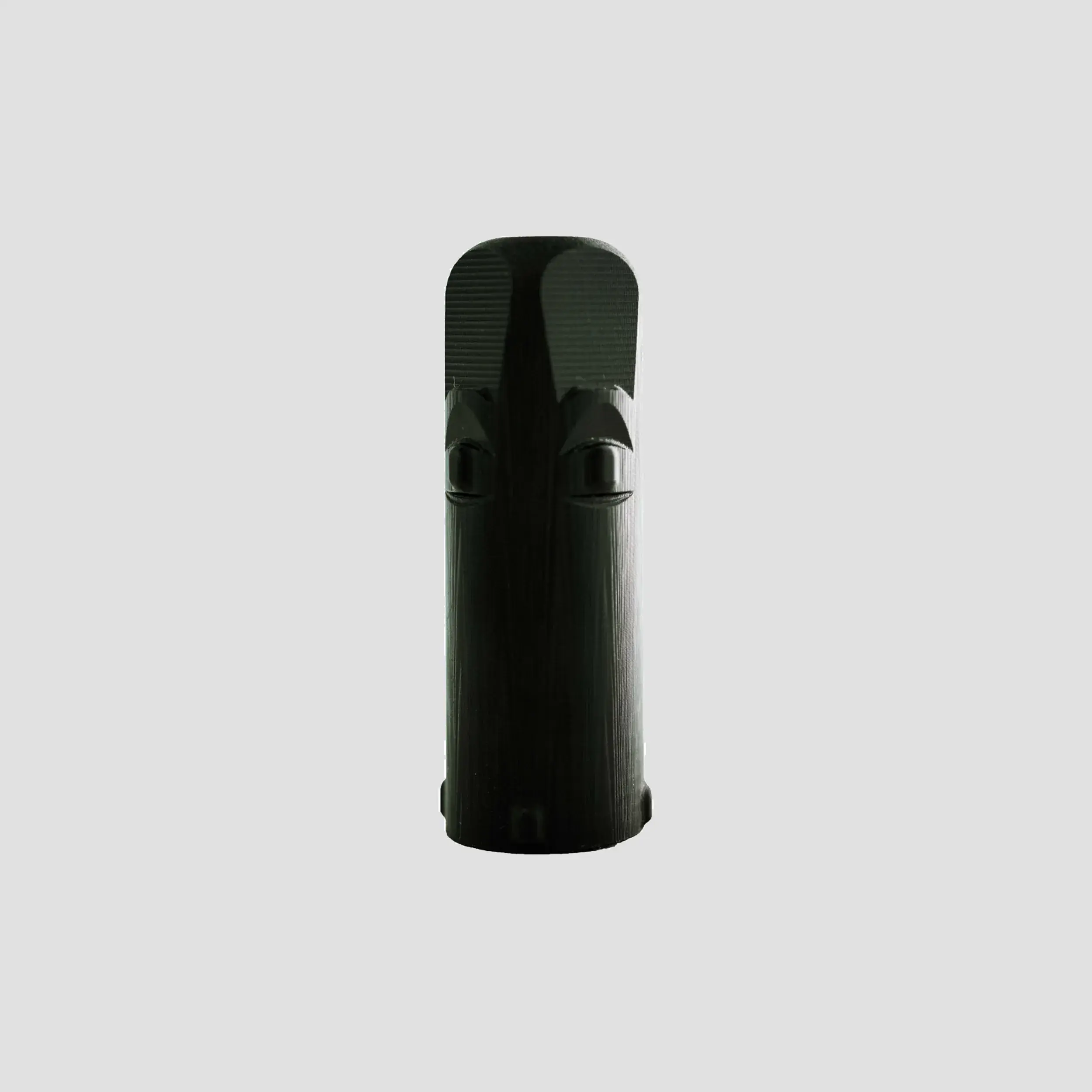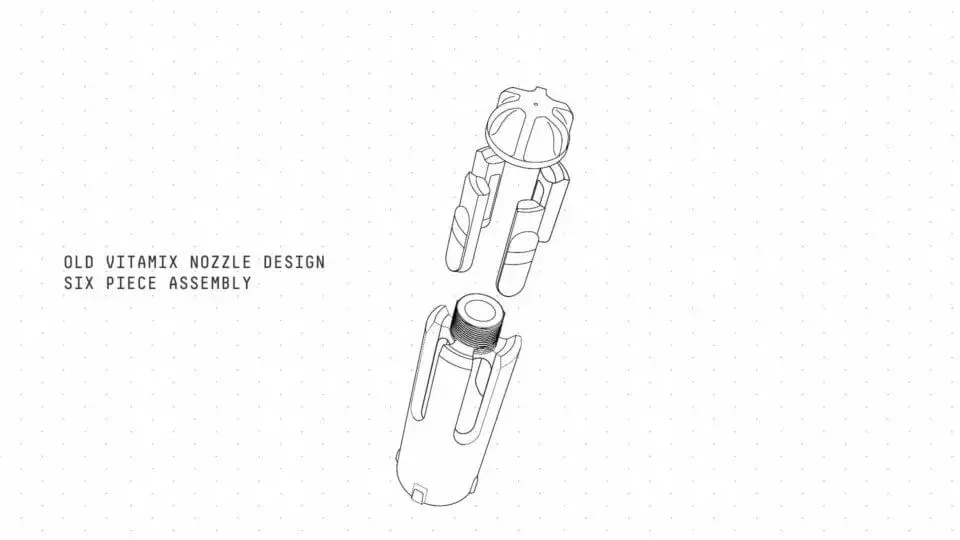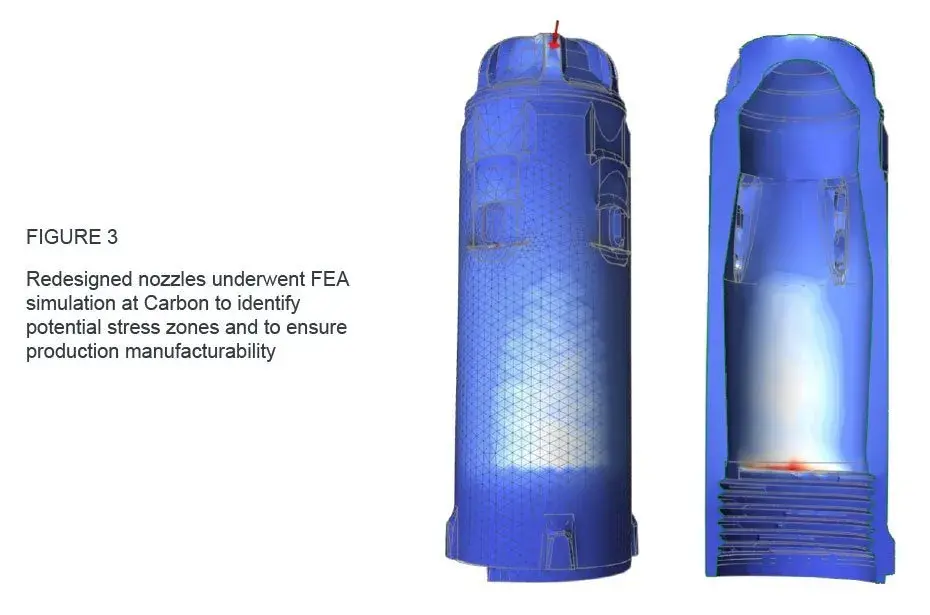Vitamix Produceert 10x Duurzamere Onderdelen met Carbon's Technologie

Vitamix is a global leader
With nearly 100 years of product design and development history, Vitamix has been at the epicenter of the healthy lifestyle movement, enabled by its innovative blender products known for their performance, versatility, and ease of use. Recently, Vitamix partnered with The Technology House (TTH) and Carbon to redesign a specialized nozzle used in commercial settings. This particular nozzle was originally designed for the injection-molding process, using multiple pieces that required tedious assembly.
Read this case study to learn how Vitamix collaborated with TTH and Carbon to completely redesign and produce an innovative nozzle that is 10x more durable and 30% more economical than the previous nozzle. Vitamix is in the process of deploying tens of thousands of these nozzles into stores.
Challenges with existing nozzle
Vitamix produces a specialized nozzle (Figure 1) used for rinsing commercial blenders in a store setting. These microfluidic nozzles are designed to jet pressurized water out of 300 micron holes and are regularly exposed to bleach, detergents, and other sanitizers for fast and efficient rinsing of blender containers. Therefore, the functional requirements for these nozzles are twofold:
- Robust microfluidic design to jet water at high speeds and pressure in a pattern requiring very specific and fine geometry
- Reliability, specifically the ability to handle daily wear and tear in a commercial food service environment

Legacy nozzles
Legacy nozzles were made with six parts designed for the injection-molding process at the production level, and during the early development process, constructed from a variety of prototyping processes including stereolithography (SLA), selective laser sintering (SLS), fused deposition modeling (FDM), and cast urethane. Injection molding is typically associated with high tooling costs, part lead time delays, and significantly lower freedom around part design and iterations.
New product development mindset
Challenged with limited nozzle development time and looming field test delivery requirements, Vitamix approached TTH, a leading contract manufacturer based in Ohio, to help them. TTH looked at the complex microfluidic nozzle and decided to 3D print all six individual parts using Carbon’s SpeedCell™ system (which includes the M Series printers and Smart Part Washer) and Rigid Polyurethane (RPU) material. The initial problem-solving approach was to lower or eliminate tooling costs, reduce part lead time, and deliver parts with high geometric fidelity that also exhibit robust mechanical properties with no supplier or tooling dependencies. No other process offered this combination of features.
The approach was to conduct field tests and iterate on the nozzle design. With 3D printing, manufacturers can print field-ready parts in a matter of days, versus months with injection-molding suppliers. However, this approach still required multi-part assembly (due to the design for injection molding) and high operating pressures.
Carbon’s technology is capable of manufacturing complex geometries
Engineers at Vitamix were pressed for time to meet their customer expectations. Eager to push the boundaries, the Vitamix and TTH teams realized that they were not fully leveraging all the capabilities of Carbon’s Digital Light Synthesis™ technology (Figure 2). Vitamix and TTH engineers set their sight on the ambitious goal of manufacturing the entire six-part nozzle as a single monolithic part with no assembly requirements. Carbon’s material met the desired mechanical characteristics while offering excellent resistance to bleach. Carbon’s technology is capable of manufacturing complex geometries and channels with excellent surface finish, a critical element due to the high-pressure fluidics performance requirement of the nozzle.

Another aspect to highlight in this product development journey is the speed of innovation. Empowered by Carbon’s digital manufacturing capabilities that allow for rapid design validation as well as final manufacturability validation, product engineers successfully iterated six to seven times on the nozzle design within a span of only four weeks.
Using the injection-molding approach, a single design iteration and resulting tooling (assuming no tooling issues) could have taken eight to 10 weeks. This speed of design iteration and manufacturability with Carbon highlights the power of end-to-end digital manufacturing versus traditional manufacturing approaches. This fail-fast approach to product development with TTH and Carbon helped Vitamix arrive at a robust production solution much faster.
Results
The Vitamix optimized nozzle (Figure 4) is a single 3D-printed part with no multi-part assembly. Traditional manufacturing methods such as injection molding cannot achieve this. The innovative nozzle design uses less material, is lighter, requires no tooling, and uses 55% less manual labor to manufacture. As a result, Vitamix is able to reduce the landed cost of nozzles by ~33% compared to the legacy nozzle design. Moreover, Vitamix realized the potential for the 3D Manufacturing approach early in the internal and field-testing process, enabling them to avoid all tooling costs, engineering resources, and time associated with the injection-molding approach.

Product development teams across industry verticals can leverage a similar product design mindset for other parts, and come up with digitally optimized designs that offer better performance and are more economical.

